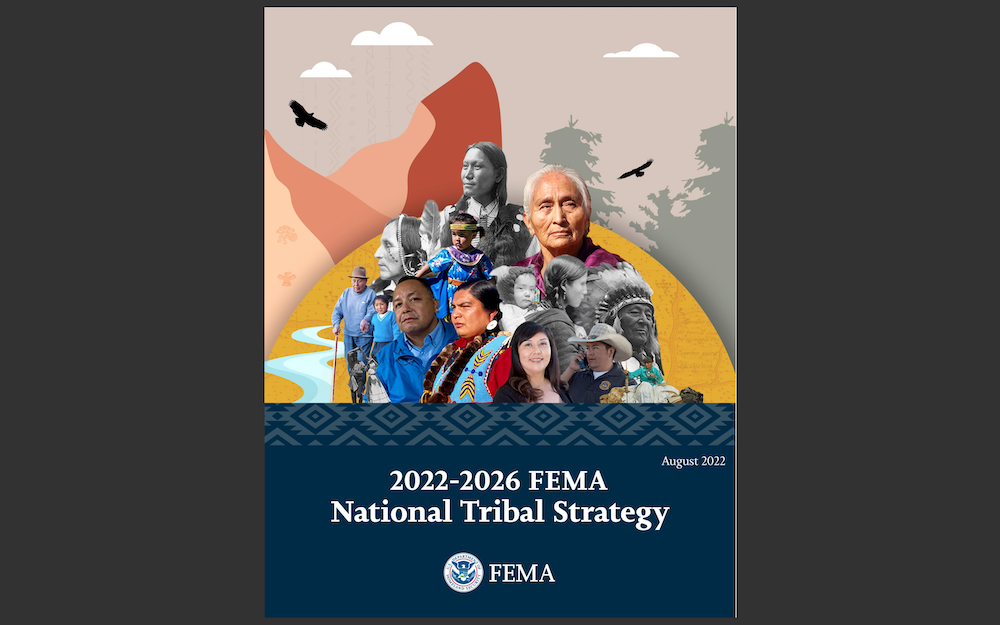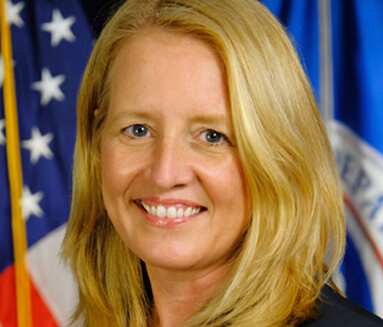
- Details
- By Neely Bardwell
For the first time in its 43-year history, the Federal Emergency Management Agency (FEMA) has released a national strategy to address its responsibilities when preparing for and responding to disasters on tribal lands.
 Deanne Criswell, FEMA Administrator (Photo: FEMA)The “2022-2026 FEMA National Tribal Strategy” provides FEMA, an agency of the Department of Homeland Security, with a roadmap to help Native communities deal with disasters, including situations created by climate change.
Deanne Criswell, FEMA Administrator (Photo: FEMA)The “2022-2026 FEMA National Tribal Strategy” provides FEMA, an agency of the Department of Homeland Security, with a roadmap to help Native communities deal with disasters, including situations created by climate change.
“We are seeing communities across the country that are facing increased threats as a result of climate change," FEMA Administrator Deanne Criswell said in a conference call with reporters earlier this week. “What we want to do in this strategy is make sure that we can reach out to tribal nations and help them understand what the potential future threats are going to be.”
Developed with extensive input from tribal nations, the strategy calls for FEMA to initiate a national study on tribal emergency management capacity and capabilities, expand communications and training with tribal nations, and develop tribal-specific technical assistance resources. The strategy reflects the voices of 135 representatives from 78 tribal nations who contributed critical feedback during tribal consultation in 2022, according to the strategy document.
As part of the effort, FEMA has set aside $50 million specifically for its Building Resilient Infrastructure and Communities (BRIC) grant program that tribes can apply for.
The newly released Tribal Strategy builds on FEMA’s 2022-2026 Strategic Plan and its efforts to advance equity in emergency management in order to increase climate resilience and prepare the nation for disasters.
During the media call this week, Criswell addressed some of the practical challenges that tribes face in disaster situations, such as having to share costs with FEMA for certain mitigation and recovery efforts.
When it comes to cost share, “there are certain things that we're required to do by statute, but there are other things where we have flexibility,” Criswell said. “Where we have the flexibility to increase the federal cost share, we will do that. In those areas where we can't, what we want to do is work with the tribes to help them find other funding sources (and) help them stitch together the different funding streams … to help them get these projects up and off the ground.”
Criswell said climate considerations that tribes face are a vital piece in the strategy, as is making sure that tribes of all sizes are made fully aware of all of FEMA’s resources, including technical assistance, grants and access to agency personnel at both the regional and national levels.
“The climate considerations are a huge part of our FEMA strategic plan and are definitely incorporated into the tribal strategy as well,” she said. “One of the big goals that I'm excited about in this strategy is the ability to provide more direct technical assistance to tribes to help them understand and navigate some of the programs we have, but also to help them plan for the future … that way we can look to invest money towards future risks, and not always based on historical risk."
Another point of emphasis in the strategy is to expand communication and engagement with tribal nations and personnel responsible for emergency management on tribal lands.
“We understand that many of our tribal nations have very small emergency management offices and oftentimes it's (alongside) other duties as assigned. It's not their sole position. And so we want to make sure that we're providing the right level of support,” Criswell said. “A lot of it is starting with our regional offices and our original tribal liaisons. So they have their own engagement strategies, and we're looking to increase that engagement.”
That will likely include increased visits to Indian Country by agency officials. During the consultation process, tribal leaders told agency officials they wanted to see FEMA representatives in the field more often.
To that end, FEMA has expanded the number of regional workshops it holds for tribes across the country and plans to increase the number of meetings it holds with tribal emergency management officials.
For her part, Criswell intends to meet more regularly with tribal leaders when she is traveling in the field.
“I know that we have a lot of work to do in serving our tribal nations,” she said.
Associate Editor Brian Edwards contributed to this story.
More Stories Like This
Native News Weekly (August 25, 2024): D.C. BriefsUS Presidents in Their Own Words Concerning American Indians
Blackfeet Nation Calls Out McDonald’s After Native Athletes Turned Away
New Mexico Wild Action Fund Supports Deb Haaland’s Gubernatorial Bid
Landri Von Gonten Achieves Major Wrestling Recognition
Help us defend tribal sovereignty.
At Native News Online, our mission is rooted in telling the stories that strengthen sovereignty and uplift Indigenous voices — not just at year’s end, but every single day.
Because of your generosity last year, we were able to keep our reporters on the ground in tribal communities, at national gatherings and in the halls of Congress — covering the issues that matter most to Indian Country: sovereignty, culture, education, health and economic opportunity.
That support sustained us through a tough year in 2025. Now, as we look to the year ahead, we need your help right now to ensure warrior journalism remains strong — reporting that defends tribal sovereignty, amplifies Native truth, and holds power accountable.
 The stakes couldn't be higher. Your support keeps Native voices heard, Native stories told and Native sovereignty defended.
The stakes couldn't be higher. Your support keeps Native voices heard, Native stories told and Native sovereignty defended.
Stand with Warrior Journalism today.
Levi Rickert (Potawatomi), Editor & Publisher


